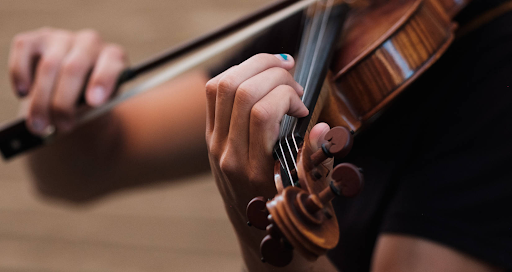Introduction to Violin Fingering Positions
Learning to play the violin involves mastering various fingering positions, which are crucial for producing different notes and melodies. For beginners, understanding these positions lays the foundation for developing proper technique and musical expression. In this guide, we will explore the fundamental violin fingering positions for beginners that every novice player should know. From first position to higher positions, each stage builds upon the previous, offering a progressive path towards proficiency.
Understanding First Position
What is First Position?
First position is the foundational fingering position for beginners on the violin. In this position, the fingers are placed on the fingerboard in a natural and relaxed manner, enabling the player to reach the notes easily.
Finger Placement in First Position
In first position, the fingers are numbered from one to four, with the index finger being one and the pinky finger being four. Each finger corresponds to a specific note, and proper placement is essential for accurate intonation.
Exercises for First Position
Beginners can practice first position by playing scales, simple melodies, and exercises designed to improve finger dexterity and coordination. These exercises focus on strengthening the fingers and developing muscle memory.
Progressing to Second Position
Introduction to Second Position
Second position involves shifting the hand slightly up the fingerboard, allowing the player to reach higher notes than those available in first position. It expands the range of the violin and adds versatility to the player’s repertoire.
Shifting Technique
Shifting from first to second position requires careful coordination and control. Beginners must learn to move the hand smoothly and accurately while maintaining proper finger placement and intonation.
Exercises for Second Position
Practicing scales and arpeggios in second position is essential for developing proficiency in this fingering position. These exercises help reinforce muscle memory and improve the player’s ability to navigate the fingerboard.
Exploring Third Position
Overview of Third Position
Third position takes the player even higher up the fingerboard, unlocking additional notes and melodic possibilities. It requires further extension of the fingers and increased precision in fingering technique.
Finger Extension Exercises
Extending the fingers comfortably in third position is crucial for playing with ease and accuracy. Exercises focusing on finger flexibility and stretching can help beginners adjust to the demands of this position.
Applying Third Position in Repertoire
Once comfortable with third position, beginners can explore repertoire that incorporates higher notes and more complex melodies. Practicing pieces specifically written for third position allows players to refine their skills and musical expression.
Mastering Fourth Position
Introduction to Fourth Position
Fourth position pushes the boundaries of the violinist’s reach, enabling access to even higher notes on the fingerboard. It requires advanced finger strength and agility to maintain control and intonation.
Finger Strength Exercises
Building finger strength is essential for mastering fourth position. Exercises targeting the muscles of the hand and fingers can help beginners develop the necessary power and control for playing in this position.
Advanced Repertoire and Techniques
In fourth position, violinists can tackle more challenging repertoire and techniques, including double stops, chords, and intricate passages. Mastery of fourth position opens up new artistic possibilities and expands the player’s musical horizons.
Transitioning Between Positions
Smooth Shifting Techniques
Transitioning between positions smoothly and seamlessly is a hallmark of a skilled violinist. Beginners must practice shifting exercises to develop fluidity and accuracy in their playing.
Hand and Arm Alignment
Maintaining proper hand and arm alignment is crucial for successful position shifts. Beginners should focus on keeping the wrist flexible and relaxed while maintaining a stable grip on the violin neck.
Mental Preparation
Preparing mentally for position shifts is just as important as physical preparation. Visualizing the upcoming shift and anticipating finger placement can help beginners execute smooth transitions with confidence.
Conclusion
Mastering violin fingering positions is an essential aspect of learning to play the instrument. From first position to higher positions, each stage offers new challenges and opportunities for growth. By practicing diligently and focusing on proper technique, beginners can develop the skills and confidence needed to excel in their violin journey.
